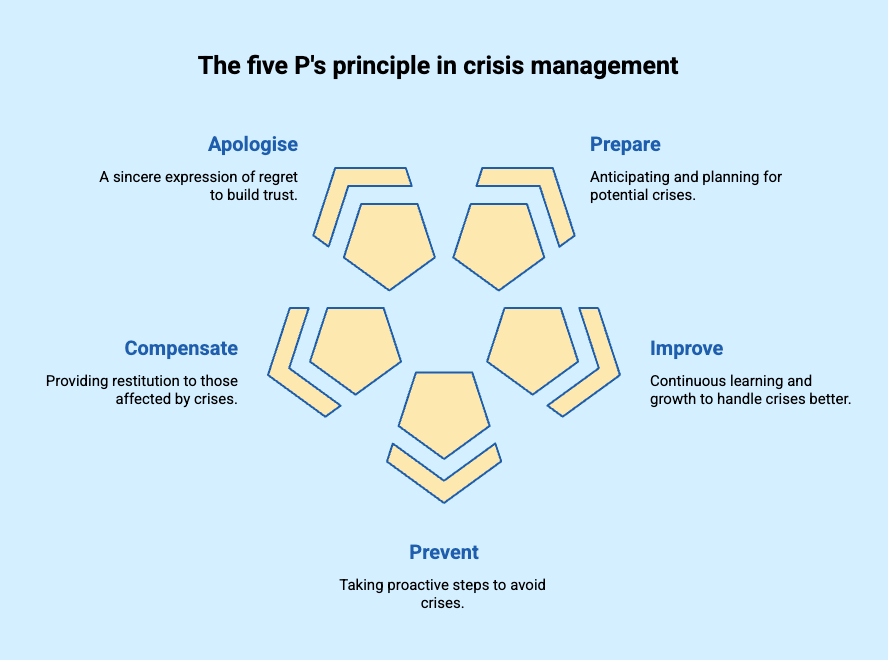
I hope you haven’t yet encountered negative online reviews about your school. However, if such a situation does arise, it’s worth knowing how to respond appropriately so that a minor comment doesn’t escalate into a major crisis. Customer complaints, if handled correctly, can become an opportunity to demonstrate professionalism and a commitment to service quality. You are surely aware of how much potential customers rely on the opinions of friends or those found in Google search results.
What will you find in this article?
- How to respond to customer complaints?
- The five P’s principle in crisis management
- Tips on responding to customer complaints
- Summary – how to respond to customer complaints
How to respond to customer complaints?
Not every opinion about a language school is positive. Even the best institutions may face criticism, and the Internet often becomes a platform for expressing dissatisfaction. How can you handle such situations and emerge unscathed?
Good communication with a dissatisfied customer is the key to resolving conflict and protecting the school’s image. In this article, you will learn practical principles and techniques to help you effectively manage complaints.
The five P’s principle in crisis management
1. Apologise
The first step is to admit to the mistake or show empathy. Even if you are not sure whether the complaint is justified, demonstrate that you care about resolving the issue. A proper apology should be sincere and professional, for example: “We are very sorry that you experienced this situation. Thank you for reporting it, we will address it immediately.”
2. Prepare
Do not wait for a crisis – prepare procedures that will help you respond quickly. Appoint a person responsible for handling complaints, plan specific compensations for the most frequently occurring problems, and develop example guidelines or response frameworks to facilitate communication. Well-planned actions minimise the risk of escalation.
3. Improve yourself
Note the reported feedback and internally analyse the problem. If the error recurs, implement specific changes, such as updating the curriculum or conducting staff training. It is also important to publicly inform about the resolution of the issue, especially on social media.
4. Prevent
Every crisis is a lesson for the future. Organise a team meeting to discuss the situation and develop preventive solutions. You can also create an action plan for similar incidents, such as implementing a new customer service policy for the language school.
Learn more about this in our article on customer service in a language school!
5. Compensate
Offering compensation can alleviate negative emotions. It doesn’t have to be an expensive proposition – a simple extra lesson, free consultations, or a discount on the next term can suffice. The important thing is for the client to feel cared for and that their issue matters.

Tips on responding to customer complaints
1. Stay calm
Avoid emotional reactions. After reading a negative review, take a moment and prepare a thoughtful response. If in doubt, consult with your team.
2. Don’t waste time
A quick response is crucial. Reply to the complaint as soon as possible, even if you don’t have a ready solution. Inform the client that the matter is being addressed and that you will provide more information within a specified time.
3. Don’t delete comments
Deleting negative reviews can have the opposite effect. The exception is comments containing vulgarities, spam, or illegal content.
4 Indicate a solution
Propose specific assistance, such as changing the group, providing additional teaching materials, or having a conversation with the teacher. The client should feel that their problem is important to you.
5. Privatise the discussion
If the client becomes aggressive or conducts the conversation in an unconstructive manner, try to move the communication to private channels. Remember to inform them of this publicly, e.g.: “We have sent a private message to discuss the details of the matter.”
6. Don’t be a machine
Avoid repetitive, template responses. Show that there is a human behind the communication who wants to understand the client’s issue. Personalising responses increases trust.
Summary – how to respond to client complaints
Effectively responding to client complaints in a language school requires the application of 5 key principles: apology, preparation, improvement, counteraction, and compensation. It is also important to remain calm, react quickly and personally, avoid deleting comments, and propose real solutions. A well-managed complaint can strengthen the school’s image and build greater client trust. Remember, the key is open communication and a willingness to resolve issues.
If you want to learn more about managing reviews and building the image of a language school, check out our post: Google Business Profile for language school – why is it worthwhile to have one?
